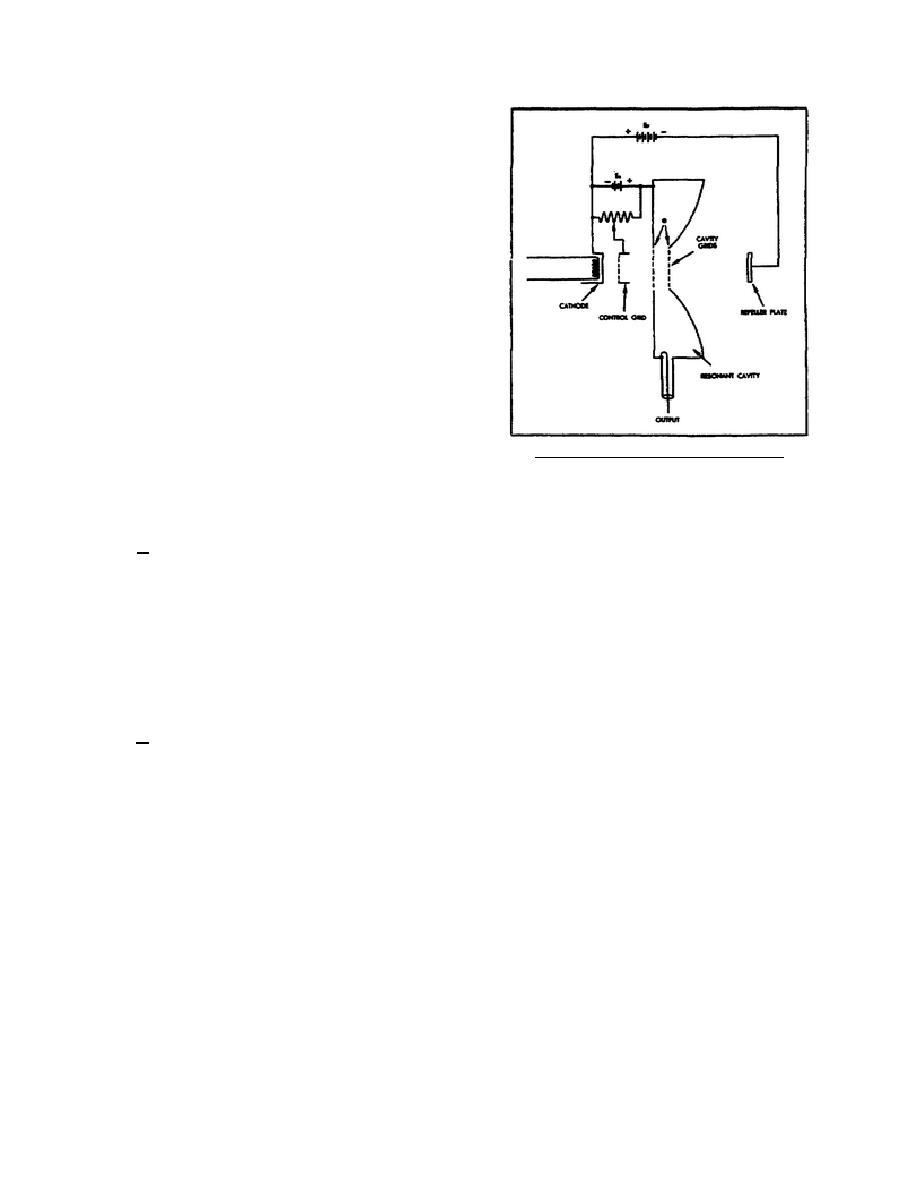
Section III. REFLEX KLYSTRONS
1-5. DESCRIPTION
Reflex klystrons are used whenever microwave
signals at low-power levels are required. Reflex
klystrons are used frequently as oscillators in
microwave terminals. The main difference between
the reflex klystron and the two-cavity klystron is that
the reflex klystron uses only one resonant cavity, as
shown in figure 6. This resonant cavity is used to
velocity-modulate the electron beam and is very
similar to the buncher and catcher cavities in the
two-cavity klystron. The control grid in the reflex
klystron controls the number of electrons, and the
first grid in the cavity acts as an accelerator. The
second cavity grid modulates the electron beam.
The reflector electrode is operated at a voltage more
Figure 6. Reflex klystron, schematic.
negative than the cathode and is commonly called
the repeller plate.
1-6. OPERATION
a. The operation of a reflex klystron is considerably different from that of the two-cavity klystron. The
electrons emitted from the cathode travel toward the cavity grids at a velocity determined by the potential Ea.
Most of the electrons pass through the control grid and the cavity grids, and continue on toward the repeller plate.
After passing the cavity grids, they come to a region where the electric field opposes their motion because the
repeller plate is negative with respect to the cathode. The voltage between the cavity grids and the repeller plate
is considerably greater than the plate-to-cathode potential, and the repeller plate is negative with respect to the
cavity grids. The negative repeller plate slows down the electrons, causing them to come to a stop, reverse
direction, and pass back through the cavity grids. The electrons are then collected by the control grid, the tube
shell, or the cathode.
signal) appears between the two cavity grids. The electric field between the grids will reverse twice during each
cycle of operation. As the electrons from the cathode approach these grids, the electron stream is uniform. The
time that is required for the electrons to pass through the short distance between the cavity grids is small
compared with the period of oscillations. Electrons that enter the space between the cavity grids when the cavity
signal is zero will not encounter an electrical field and will pass through the cavity grids at normal velocity. The
electrons that enter the space between the cavity grids when the cavity signal makes the first grid negative |
and the second grid positive will encounter a field which tends to accelerate them. The amount they are
344 L1
7


 Previous Page
Previous Page
